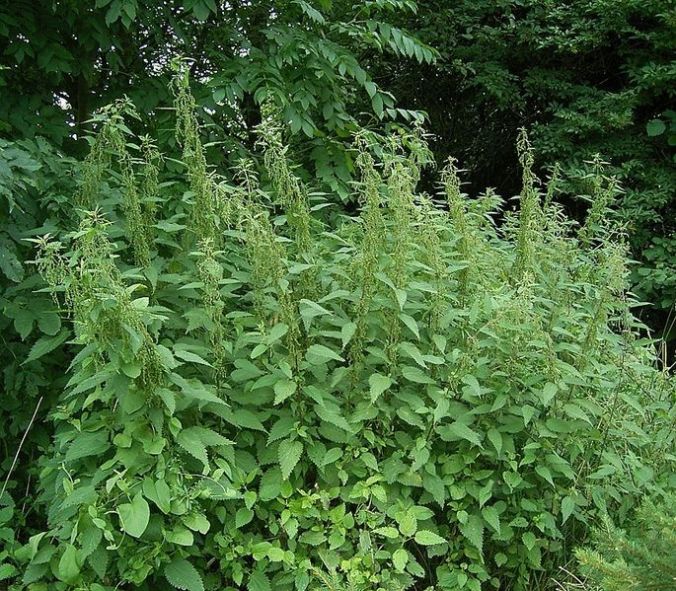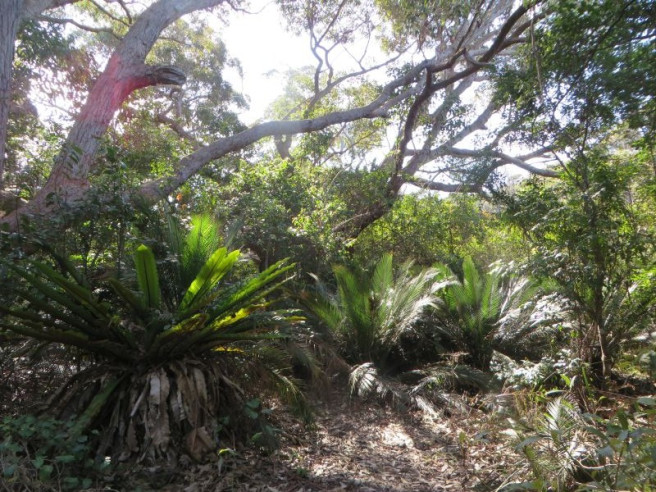Over the past decades the human population has experienced unprecedented growth and as a result society has made advances in political, environmental, economic, social and technological realms. The importance of the role food plays in the sustainability of the world’s population is universally acknowledged and accepted as fact. Without food the human population will fade and eventually cease to exist. The issue falls within food production. How do we manage population growth at the same time as preserving limited farming land, finite resources and traditional methods?
The level of food security around the globe varies, but there is a general consensus that if population growth continues on its projected path we will exhaust our supply. There is now the need to secure food sources for future generations. A proposed solution to this is the increased production and consumption of genetically modified organisms (GMOs). This essay will aim to identify the current global and national context of GMOs in food production and the impact on contemporary society and future generations.
Food is essential for all life on the planet, be it a fish in the ocean, a tree in the Amazon or a human living in a developed urban centre. The increase in population, personal wealth and consumerism has lead to a threefold issue within the global context. Godfray, Beddington et al (2010, p. 812) have identified the challenges of “matching the rapidly changing demand for food from a larger and more affluent population to its supply; do so in ways that are environmentally and socially sustainable; and ensure that the world’s poorest people are no longer hungry” as the key areas of stress in food production and development for the future.
Maslow’s hierarchy of needs places biological and physiological as the most essential basic needs humans require. Within this category is breathing, water and food. Within the current global context 12.7% of the population live on or below the poverty line, just $1.90 per day (Worldbank 2012). As a society we fail to provide the most basic needs of Maslow’s hierarchy for everyone. There is now pressure from society to rectify these issues and provide food for the neediest around the world, whilst at the same time maintaining sustainable farming and production practices and safeguarding the future of food production on a global scale.
There are two sides to the argument. Firstly, GMOs are the way of the future; they will ensure food is adequately provided for the increasing global population. Secondly; traditional farming and production methods should be maintained for the health and longevity of society and the farming industry around the world.
Food Security
Food security affects each and every person on the planet. The importance to secure food production and stocks for future generations is at the forefront of much international and Australian policy debate and attention. The definition provided by the Food and Agriculture Organisation (1996) states;
“Food security is achieved when all people at all times have physical and economic access to sufficient, safe and nutritious food to meet dietary needs and food preferences for an active and healthy life.”
This is currently not being achieved on a global or national scale, and this is a major issue facing the international community. The lack of sufficient food has a direct impact on the health, well being and livelihoods of all people around the world (McDonald 2010, p2).
With a population edging towards 24 million (Australian Bureau of Statistics, 2015) and a stable political environment, places Australia within the top ten of the global food security index (2015). Australia produces enough food to feed 60 million people each day, but we still face issues of poor nutrition in low socio-economic regions. The Prime Minister’s Science, Engineering and Innovation Council (2010) has identified Australia key strengths relevant to building food security:
- Strong, successful agricultural lineage in harsh farming conditions, currently one of the top producers in extremely dry conditions, variable climate and poor quality soil
- Ability to deliver on technological advancements
- Agricultural, human health and nutrition research and development ranks amongst the highest in the world
- Climate change conscious and active in the international cause
The building pressure of food security globally and nationally will pose new challenges to the international community. The Prime Minister’s Science, Engineering and Innovation Council 2010) identify the following areas as the most prominent increase in demand:
- Supply Chain improvements and resilience; efficiency in food production, processing and distribution and responsibility in purchasing and consumption to reduce wastage and minimise costs.
- Advancements in food production developments; Research and the delivery of innovations to underpin productivity growth in the food sector, to meet human health needs and bring improvements in food processing.
- Flexibility and responsiveness in regulation to ensure rapid delivery of innovations to the food value chain.
The Food Supply Chain
Food security is inherently linked to the food supply chain. Without the production, processing, transportation and distribution of foods, the global situation may become much worse than it currently is. Wells and Edwards (2004; p17) identify the food supply chain as;
“A spectrum of activities from agricultural production of bulk food commodities and ingredients through fresh produce to manufacturing, distribution, sales and consumption. It includes fresh and processed food products, ingredients and beverages”.
The Department of Agriculture, Fisheries and Forestry (2012) conducted a study into the resilience and effectiveness of the existing food supply chain. This study, conducted by Sapere Research Group, determined the existing food chain has a high degree of resilience on a national, regional and local level but that supply and demand of the future will decrease this.
The question has been posed over recent years as the sustainability and reliability of the global food chain, with unprecedented levels of food contamination and food shortages impacting the market. As the population grows and food production doubles to cope with demand, will the supply chain remain stable? There is a concern amongst the international community that, the only solution to meet the increasing demand for food is to produce more of it in shorter time frames. This could be solved through the introduction of more genetically modified foods.
Genetically Modified Foods
At its most basic definition genetic modification is isolating a gene from one plant source and pasting into another source. The World Health Organisation (2015) defines genetically modified foods (GMFs) as;
“Foods derived from organisms whose genetic material (DNA) has been modified in a way that does not occur naturally, e.g. through the introduction of a gene from a different organism”.
The increased use of genetically modified foods in the future is a certainty. Currently there is only the use of plant based modification, the World Health Organisation has indicated that genetically modified animals are likely. Most genetically modified crops have been developed with the purpose of increasing resilience to disease, tolerance of herbicides and to increase yield. To achieve food security for the growing population genetically modified foods is the most likely solution. This is certainly a feasible option if conducted in a way that is safe for the consumer and fair for farmers.
Although food biotechnology has been present within cultures for many years (fermentation being one of the oldest processes in making bread, beer and soy sauce) the first introduction of genetically modified foods to the global market was in 1983. The result was a tobacco plant resistant to antibiotics (Monsanto 2014) and later the Flavr Savr tomato, which essentially did not rot.
Genetically modified foods are produced to meet a number of key challenges facing international and domestic communities. The underpinning reasons for scientific advancements in food biotechnology and genetics is to (The Prime Minister’s Science, Engineering and Innovation Council 2010);
- Improve water use and management in agriculture.
- Tackle the problem of soil nutrition and reduce the reliance on high energy requirements for fertiliser production.
- To ensure sustainable management of the natural resource base.
- To accelerate advances through new plant, livestock and breeding strategies.
All of these points underline the main objective which is to provide enough food for the growing human populations. Parehk (2004) suggests that the rapid urbanisation and industrialisation, impact of climate change on water and air quality and increasing computer technology leading to a simplified supply chain are core contributors. Therefore, supporting the need to increase the rate at which genetically modified foods are produced and an increase in market presence. The pretence for developing genetically modified organisms is to take the best from one plant and enhance another, in order to create sustainable food supplies for future generations.
Genetically modified seeds have been proven to increase crop yields whilst reducing the use of limited natural resources. They are also a vessel in which additional nutrition can be injected into the food chain. The introduction of genetically modified foods such as soy, corn, cotton and wheat has strengthened the food supply chain and somewhat safeguarded food security for future generations.
Debate Surrounding Genetically Modified Foods
The role of genetically modified foods on the global food industry is polarising. As a cohesive society we are facing climate change, slowing growth of primary industries, degradation of land and soil quality and a growing population. Traditional farming and production methods will simply not meet the needs of the future (Parehk 2004).
Although the increased production of food may seem like the most obvious answer, there is a strong cohort against the use of genetically modified food within the supply chain. The key areas of concern raised in the genetically modified food debate are in relation to treatment of farmers by transnational biotechnology corporations such as Monsanto, the side effects on the human body, impacts on the natural environment, safety of the products and of course the ethics of the entire process.
Agricultural & farm management practices
Monsanto has been accused in the past of mistreatment, intimidation and threats against farmers who have the authority to use their patented genetically modified seeds and some who have indirectly used seeds without permission from the company (otherwise known as cross pollination). Traditional farming methods have seen the planting, harvest and cleaning of seeds for centuries. The introduction of Monsanto patented seeds has seen a stop to this time-old method, with farmers who purchase genetically modified seeds required to purchase new from Monsanto each year. This has impacted on the bottom line for both farmers and Monsanto, with the latter faring better than the former.
Monsanto states that only nine cases have been to trial in the past 18 years, all of which resulted in their favour. The main issue being farmers not paying for new seeds in the new season. Monsanto has indicated that “Through our own actions or through third-parties” they find farmers who are not sticking to their purchase agreements. This statement alone infers some type of power and intimidation over the farmers who purchase the seeds.
Monsanto is a business that should be paid for goods and services provided, they do invest large quantities of money into research of agriculture and ways to create a more sustainable food supply chain for the future. The issues raised have always been in relation to the way in which they treat their farmers and the management of farms which use their products.
Effects on human health
One of the common issues raised in the genetically modified debate is the risk these products pose to human health. Monsanto has been at the forefront to advise that there is no negative impact from consuming genetically modified foods, however the rapid rate of advancement makes it difficult to be so certain, and without human testing there is no real certainty. Many claim that genetically modified foods cause the body to be more susceptible to allergies and may create new ones. Greenpeace (2011) provides the example of genetically modified peas produced in Australia, which caused an allergic reaction in mice, and found the mice to be more sensitive to other food allergies. The effects of herbicides on health has also been at the forefront of the genetically modified discussion due to concerns it can impact on hormones and how they behave in the body.
Impact on ecosystems
Ecosystems are complex (Parehk 2004) and concerns have been raised about the possible effect on introducing new plants. This is not limited to impacts on other plants. Since the introduction of Monsanto genetically modified seeds, there has been a decline in both monarch butterflies and honey bees (Monsanto 2014), both crucial to the natural reproduction of plants and crops in traditional farming practices. Monsanto has implemented programs to counteract the impact their products have had on the feeding and breeding environments of both species.
Genetically modified seeds developed by Monsanto have been successful in reducing water consumption on farms (ideal for farming regions in Australia, the driest continent). Certainly a positive step in the right direction for sustainable farming domestically.
Food Safety
There is little evidence of harm caused by eating genetically modified foods in saying this there has been limited information made available to the public about the actual products generated by Monsanto. Food Standards Australia New Zealand (2013) state that genetically modified foods must undergo a safety assessment and pass approval before sale. It is also compulsory to identify genetically modified foods on all food labelling, this is not a consistent practice on a global scale. Safety is hotly debated with many anti-genetically modified campaigners, such as March Against Monsanto, producing very consistent arguments against the products and the damage they do to general health, farmers and the environment.
Ethical practices
The ethical practices of Monsanto are at the forefront of anti campaigners. Some aspects of the organisation lack transparency and accountability for actions. Another ethical dilemma with the increase of genetically modified foods is the ‘ownership’ of plants. Tietel and Wilson (2010, p3) state “a handful of giant corporations have placed patents on food plants giving the exclusive control over that food”. Monsanto have effectively created a monopoly on food and own anywhere between 80% to 95% of genetically modified crops. This has lead to essentially the entire globe relying on one corporation for future food security, not an ideal situation to be in for such an important issue.
International and Domestic Regulatory Bodies and Policy
Although Monsanto has the monopoly on the production, it still must follow protocols set to international and domestic standards. The Food and Agriculture Organisation of the United Nation (FAO), the Intergovernmental Task Force on Foods Derived from Biotechnology and the World Health Organisation are instrumental in implementing and monitoring protocols for producers of genetically modified foods. The task force has enforced some codes of conduct for genetically modified producers, it is mandatory for all foods to be tested for allergic properties, all safety assessments are case-by-case and post market reviews are to be further researched. Unfortunately, this task force has been dissolved, leaving a critical role in the hands of various departments.
On a national level, Australia implements its own protocols and standards via Food Standards Australia New Zealand. This organisation is responsible for the approval of all genetically modified foods in Australia and New Zealand, prior to them being available in the market. The concepts and protocols have been derived from the aforementioned task force risk analysis principles. The primary purpose of the FSANZ (2013) being:
- Identification of new hazards as a result of modification
- Assess potential risk with products in the context of their intended use
- Determine any new conditions are needed for safe use
FSANZ regulates all food labelling. It is mandatory to label all genetically modified foods and products in Australia and New Zealand. There are some exceptions to this however. Restaurants are exempt from identifying the use of genetically modified foods, along with some products containing very minimal traces. To date, there has been no knock backs on any application of genetically modified foods by FSANZ.
Corporate Social Responsibility, Economic & Environmental Implications
Monsanto’s approach to corporate social responsibility is very prevalent. Throughout the vast majority of marketing and corporate documents, they identify the ways in which they are actively enhancing food security, increasing effective water usage and developing new sustainable practices. Monsanto positions themselves in a very positive light and is very effective at setting a tone, if we didn’t have Monsanto we would not be able to feed the world. This monopoly attitude is a dangerous attribute of the corporation, and fear mongering to a certain degree. Genetically modified foods are important for future food security, but awarding all of the power to one corporation is not the way to move forward in a sustainable manner.
Meeting food security is one of the costliest endeavours in contemporary society. The estimated cost of feeding the worlds neediest is approximately $30 billion per year (New York Times 2008) and this funding needs to be sourced from somewhere, the lack of which is impacting the ability to effectively feed the current population and will continue to be struggle as growth continues. Using a sole provider to secure food for the future will greatly impact on the bottom line of Monsanto, as a business they are more concerned with profits than making a difference for free.
The main issue that would arise from this food production model is a monopoly. This economic structure does not work, competition is required. Putting all trust in one corporation is not the way to secure sustainable food sources for the future. There is the potential to develop such unattainable farming practices that traditional methods will have no chance at competing. Although genetically modified foods have a place in food security they are not the absolute solution.
The reliance solely genetically modified food is a potential issue we face as a society. If we can produce more food using less finite resources, this could only be seen as a way to ensure food security. However, we must also take into account the farming and agricultural history that is embedded in so many global and domestic communities. For all farmers to purchase Monsanto brand seeds would create monotone farming across the globe, certainly impacting the food supply chain.
In the ecological sense we also run the risk of removing all natural development with food. Organisms have, since the start of time, been developing and advancing in their own ways. There is a point when we may take modifications too far to integrate into the natural environment without negative affects. Taking the destruction of the monarch butterflies habitat as an example, measures need to be implemented to ensure this does not happen again in the future.
Although in an ideal world everyone would have their own piece of land to farm their own organic produce and rear animals, this is never going to be the case. In order to achieve food security for future generations there is the need to adopt food modification and new production techniques for farming and food production. This however cannot be effectively achieved through the monopolisation of the industry by corporations such as Monsanto, they must simply be one part of the food supply chain, not in control of the entire system.


























 Wine 1
Wine 1 Wine 2
Wine 2 Wine 3
Wine 3 Wine 4
Wine 4








